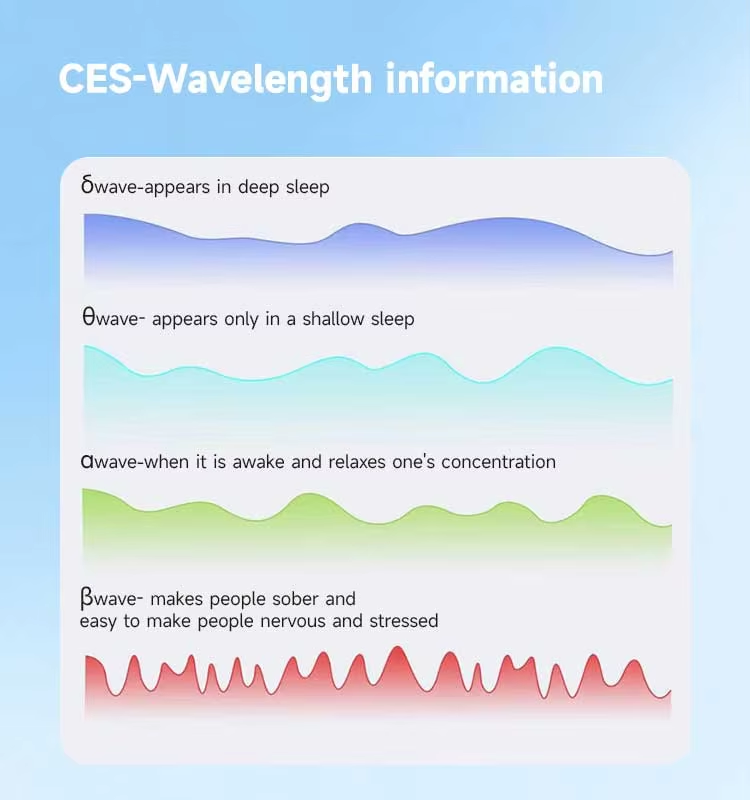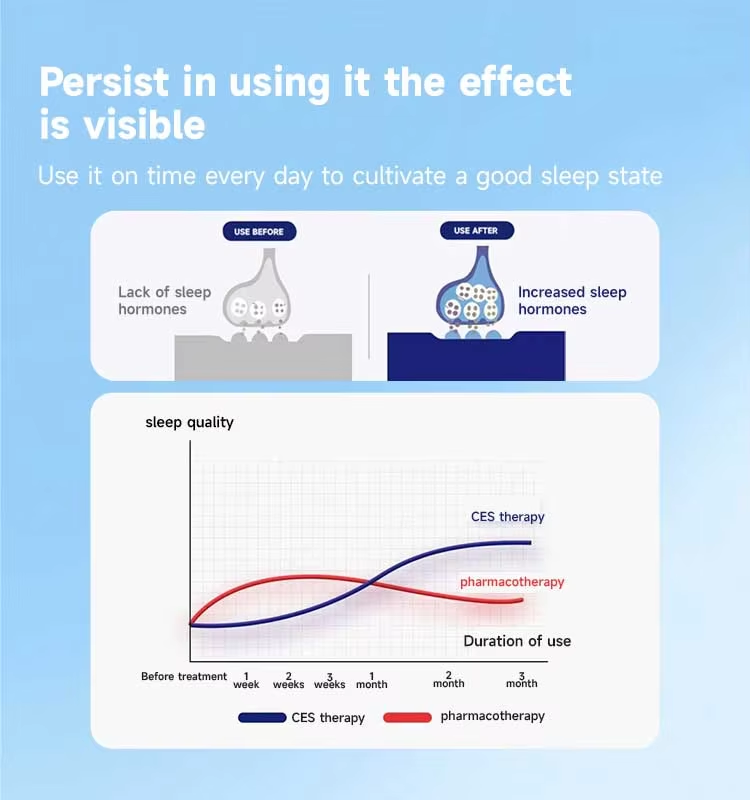CES stands for Cranial Electrotherapy Stimulation also known as Transcranial Microcurrent Stimulation. It is a side-effect-free physical therapy that has passed FDA safety certification. The principle is to use low-intensity microcurrent to diffusely stimulate the brain's limbic system simulating the body's normal wave frequency. This helps affect and improve abnormal brain waves increase sleep depth and enhance the brain's secretion of endorphins which can regulate mood achieve a calming effect and support the auxiliary improvement of neurasthenia-related conditions.

Sleeplessness is tied to the brain’s activity, where neurotransmitters—key electrochemical signals—regulate the shift between sleep and wakefulness. When these signals are out of balance, it can disrupt the natural ability to fall or stay asleep. CES works by using gentle electrotherapy to safely modulate these brain-based electrochemical signals. This subtle adjustment helps guide them back toward a balanced state, creating conditions that support the body’s natural rhythm of transitioning into and maintaining sleep.

Moods and emotions, including feelings of anxiety, are regulated by the brain’s electrochemical signals, which rely on a balance of neurotransmitters and hormones. When these signals are disrupted, it can lead to heightened emotional unease or imbalances in the chemicals that govern mood. CES devices like the AT-9 work by delivering gentle low-frequency electrical pulses that interact with the brain’s neural pathways. This subtle stimulation helps support the brain’s natural ability to regulate these electrochemical signals, encouraging a more balanced state of neurotransmitter and hormone activity. Over time, this balancing effect can foster a greater sense of calm, easing feelings of tension and promoting relaxation, which in turn may help create a more settled emotional state.










